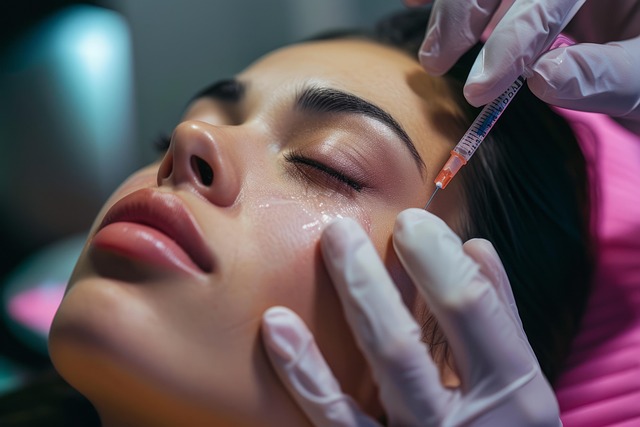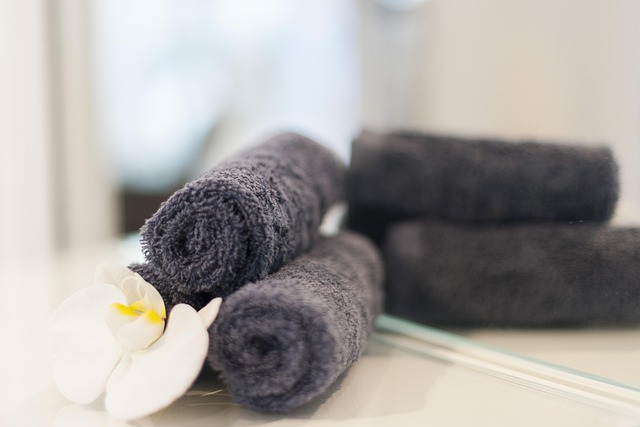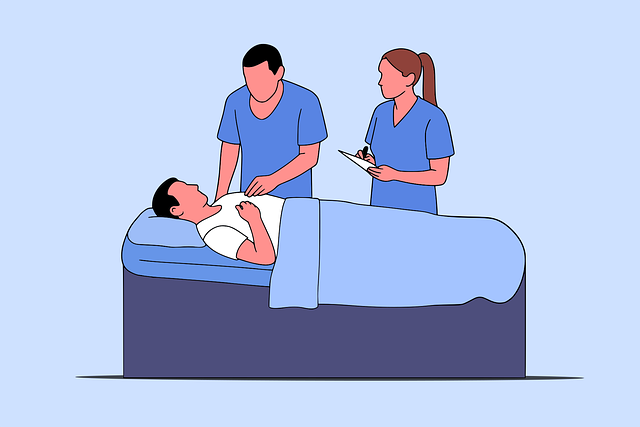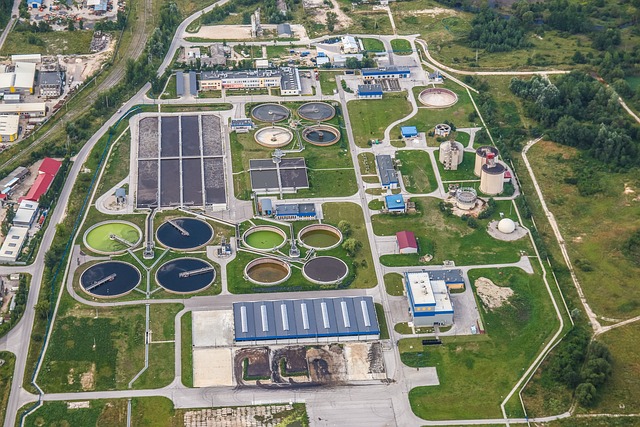Botox treatments, derived from bacteria, are popular for wrinkle reduction and anti-aging due to its ability to block nerve signals to muscles, preventing dynamic wrinkling caused by facial expressions. This non-invasive procedure temporarily paralyses or weakens muscle contraction, leading to smoother skin and a more youthful appearance. Botox has gained popularity as a quick, virtually painless treatment with minimal downtime, offering significant wrinkle reduction in high-visibility areas like the forehead, between eyebrows, around eyes (crow's feet), and "neck bands." Beyond cosmetic uses, Botox treats chronic migraines, hyperhidrosis, and eye conditions, enhancing quality of life. Choosing a qualified healthcare professional with expertise in cosmetic procedures is crucial for safe and effective results, while understanding potential side effects ensures informed consent. Maintaining treatment outcomes requires regular hydration, sun protection, follow-up appointments, and tailored skincare routines. Success stories highlight Botox's transformative effect on self-confidence and overall quality of life.
“Unveil a rejuvenated you with Botox treatments, a popular non-surgical solution for wrinkle reduction. This powerful neurotoxin has taken the aesthetics world by storm, offering a subtle yet transformative approach to anti-aging. From understanding its scientific mechanism to exploring its diverse treatment applications, this comprehensive guide delves into the world of Botox.
We’ll navigate through the procedure, uncover its multifaceted benefits, and emphasize the importance of choosing an expert provider for safe, effective results. Prepare to discover a smoother, more youthful complexion.”
Understanding Botox: The Science Behind Its Anti-Aging Effects

Botox, a protein derived from bacteria, has become a popular choice for wrinkle reduction and anti-aging treatments. Its scientific mechanism involves blocking nerve signals to specific muscles, which in turn reduces dynamic wrinkling caused by facial expressions. Over time, this process leads to smoother skin and a more youthful appearance.
The effectiveness of Botox lies in its ability to temporarily paralyze or weaken muscles responsible for developing wrinkles. By inhibiting these nerves, it prevents the contraction of facial muscles, thereby reducing the depth and visibility of lines and creases. This non-invasive approach has gained significant popularity due to its minimal downtime and proven results in improving overall skin texture and tone, making it a sought-after option for those seeking Botox treatments.
Common Areas for Botox Treatments: Reducing Facial Wrinkles

Botox treatments have become a popular non-surgical solution for reducing facial wrinkles, especially as people seek ways to maintain youthful appearances. The most common areas targeted during Botox procedures are those with the most noticeable lines and creases, often making the face look smoother and more relaxed. These include the forehead, frown lines between the eyebrows, crow’s feet around the eyes, and the vertical lines on the neck, known as “neck bands.”
When administered by a qualified professional, Botox can significantly minimize these wrinkles and prevent their formation. By temporarily paralyzing specific muscles, it reduces dynamic wrinkling caused by facial expressions, providing a more youthful and rested look. Many individuals opt for these treatments to achieve a subtle yet effective lift in their appearance, making them a preferred choice for those seeking to combat the signs of aging without invasive surgery.
The Procedure: What to Expect During a Botox Session

During a Botox treatment, a small amount of botulinum toxin is injected into specific muscles responsible for causing wrinkles. The procedure is typically quick and virtually painless, with many patients describing it as tolerable, if not enjoyable. The injections target areas like the forehead, eyes (crows’ feet), and mouth (smile lines), where Botox temporarily paralyzes the muscles, preventing them from contracting and forming wrinkles.
What to expect during a session includes some mild redness or swelling at the injection sites, which usually subsides within a day or two. Patients may experience slight discomfort, but over-the-counter pain relievers can help. It’s important to follow your healthcare provider’s aftercare instructions, including avoiding strenuous activities and certain medications for a few days post-treatment. Results typically start to appear within 24 to 72 hours, with optimal results achieved around 1 to 3 months after the treatment.
Benefits of Botox: More Than Just Wrinkle Reduction

Botox isn’t just a go-to for wrinkle reduction—it offers a range of unexpected benefits that extend beyond cosmetic improvements. Often perceived as a purely aesthetic procedure, Botox treatments have proven effective in various other areas. For instance, it can alleviate chronic migraine headaches by preventing specific nerve signals from reaching the brain, providing significant relief to sufferers. Moreover, Botox is increasingly used therapeutically to treat excessive sweating (hyperhidrosis), offering individuals more confidence and comfort in their daily lives.
The versatility of Botox treatments doesn’t stop there. It’s also been found useful in treating eye-related conditions like blepharospasm, a spastic condition affecting the eyelids. By relaxing the muscles, Botox can significantly improve eye comfort and reduce the frequency of involuntary blinking. This non-surgical approach not only enhances appearance but also improves quality of life for patients presenting various medical challenges.
Choosing the Right Provider: Ensuring Safe and Effective Results

When considering Botox treatments for wrinkle reduction, choosing the right provider is paramount to ensure safe and effective results. Look for qualified healthcare professionals with extensive experience in cosmetic procedures, preferably board-certified or licensed in dermatology or a related field. Verify their credentials, check patient reviews, and inquire about certifications from reputable organizations. An experienced provider will understand facial anatomy, have a keen eye for detail, and employ the latest techniques and products to minimize risks and maximize results.
Beyond qualifications, ensure the clinic or practice maintains a sterile environment, follows stringent infection control protocols, and offers personalized consultations. A good provider will take the time to understand your goals, discuss expectations, and address any concerns you might have about the procedure. They should offer tailored recommendations, clearly explain potential side effects and downtime, and provide post-treatment care instructions to ensure optimal results and patient satisfaction.
Potential Side Effects and Risks: Being Informed Beforehand

Botox treatments have proven effective for wrinkle reduction, but it’s crucial to understand potential side effects before proceeding. Common mild issues include temporary redness, swelling, or discomfort at the injection sites. More serious, though rare, risks may involve allergic reactions, bleeding, or an uneven treatment result. Informed consent is key; discussing these possibilities with a qualified professional ensures you’re fully aware of what to expect.
Before any Botox treatment, your provider should review your medical history for conditions like muscle disorders or allergies. They’ll also assess your facial structure and skin condition to determine if Botox is suitable. This preliminary conversation is essential to ensure safety and optimal results, as it allows you to make an informed decision about proceeding with the procedure.
Maintenance and Follow-up Care: Prolonging the Benefits of Botox

After your initial Botox treatments, maintaining the results and ensuring long-lasting effects is crucial. Regular hydration and sun protection are essential components of post-Botox care. Using moisturizers and applying sunscreen daily helps to keep the skin supple and prevents premature aging.
Follow-up appointments with a dermatologist or aesthetics specialist are vital. During these visits, they can assess the treatment’s effectiveness, address any concerns, and provide additional advice on at-home skincare routines. With proper maintenance, Botox treatments can offer significant wrinkle reduction for several months, allowing you to enjoy smoother, more youthful-looking skin.
Patient Testimonials: Real Stories of Successful Botox Treatments

Many patients find solace and confidence in Botox treatments, as evidenced by their enthusiastic testimonials. Real people, just like you, have experienced remarkable results, with wrinkles significantly reduced or even eliminated. One patient shared, “I was amazed at how much smoother my forehead looked after the treatment. It’s given me a boost of self-assurance I hadn’t felt in years.” Another patient, thrilled with the non-invasive nature of the procedure, noted, “The entire experience was quick and comfortable. I can’t believe how natural it looks; no one would even guess I had any work done.”
These success stories highlight not just the effectiveness of Botox treatments but also their ability to enhance one’s quality of life. The transformation in self-perception, from feeling self-conscious about wrinkles to embracing a rejuvenated appearance, is a powerful testament to the positive impact of these procedures. Many patients report improved confidence and a sense of rejuvenation that extends beyond the physical changes.
